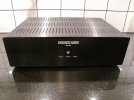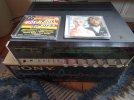I'm not an audio engineer
But he I quoted is an audio engineer.

It was just a view of it all. Whether it's just bullshit or not, I do not know. You get to ask that EE Morello/Gustav (which also constructs amplifiers) that. Or any other knowledgeable EE here.
Here is his contact information:
(no secrets he reveals himself in his avatar)
Sybarite Audio. 451 次赞 · 1 人在谈论. 电子产品

www.facebook.com
Well, you look at that. He has constructed a new amp. I did not know that.

(see attached picture)
Edit:
You get to decide for yourself. Here he performs various measurements on a tube pre amp he designed.
(he actually hates tube amplifiers , he did it mostly for fun to have something to do in his spare time). If he can measurements that is:
The construction:
Edit:
Note, Morello's critique concerns the measurement in Stereophile. It has nothing to do with audibility. That in itself can mean everything, or nothing at all (it is subjective and depends on the conditions, mainly volume and speakers / headphones) . I do not hear any distortion with my vintage receiver HK 330C, which I have as an amplifier in the bedroom. As long as I do not push it into clipping.

This is nothing new or strange. Measurements regarding amplifiers and class D.You're at ASR. The guiding light is objectivity, so why categorically dismiss what Morello writes?

Edit 2:
I can take a little more from that thread. Belker, who sometimes writes here:
Belker
: Absolutely, the level of knowledge here has high peaks, but so does the one at ASR. A much larger forum with many designers and educated people. That's why it's so strange that there is no consensus.
Morello:
Consensus on specifically what?
I do not think you understood what I wrote. If an amplifier has a THD of 1% at 20 kHz with a dominant third tone, it means that the third tone has a frequency of 60 kHz. If you measure with 25 kHz bandwidth, the third tone will be attenuated by, for example, 40 dB (depending on the flank attenuation of the filter) and the measurement will show THD of 0.01%. The measurement thus gives a false result. Do you mean that it is something you can like?
..and with all that now said. I like class D. Here and now and also in the future.






